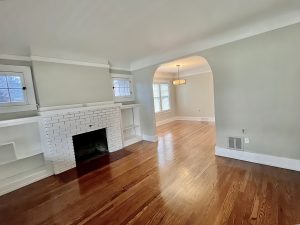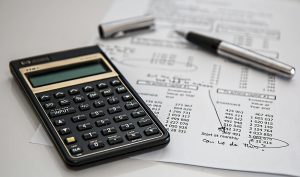Managing a rental property can be a rewarding investment opportunity, providing a steady stream of income and long-term wealth accumulation. However, ensuring the financial success of your rental property requires careful budgeting and financial planning. In this blog post, we’ll discuss six common budgeting mistakes that landlords often make and provide tips on how to avoid them to maximize your rental property’s profitability and financial stability.

1. Underestimating Expenses
One of the most common mistakes landlords make is underestimating the true cost of owning and maintaining a rental property. From property taxes and insurance premiums to maintenance and repair costs, there are numerous expenses associated with property ownership that landlords must account for in their budgets. Failing to accurately estimate these expenses can lead to financial strain and negatively impact your property’s cash flow.
2. Neglecting Emergency Funds
Another budgeting mistake landlords often make is failing to set aside sufficient funds for unexpected emergencies or repairs. Every rental property owner should establish an emergency fund to cover unexpected expenses, such as a leaky roof, broken appliances, or property damage. Without adequate reserves, landlords may find themselves struggling to cover the costs of necessary repairs, leading to delays in maintenance and tenant dissatisfaction.
3. Overlooking Vacancy Costs
Many landlords underestimate the financial impact of vacancies on their rental property’s cash flow. Vacancy costs include lost rental income, advertising expenses to attract new tenants, and turnover costs associated with cleaning and preparing the property for new renters. It’s essential to budget for potential vacancies and factor these costs into your overall financial plan to mitigate the impact on your property’s profitability.
4. Failing to Plan for Rental Property Improvements
Rental properties require ongoing maintenance and occasional upgrades to remain competitive in the market and attract quality tenants. However, some landlords neglect to budget for property improvements or upgrades, such as cosmetic renovations, energy-efficient upgrades, or landscaping enhancements. Investing in your rental property’s appearance and amenities can increase its desirability and rental value, ultimately enhancing your long-term return on investment.
5. Ignoring Regular Maintenance
Another common budgeting mistake is overlooking the importance of regular maintenance and preventive care for your rental property. Deferred maintenance can lead to more significant repair issues down the line and compromise your property’s value and tenant satisfaction. Allocate funds in your budget for routine maintenance tasks, such as HVAC servicing, plumbing inspections, and pest control, to keep your property in optimal condition and avoid costly repairs.
6. Failing to Adjust Rent Appropriately
Lastly, some landlords make the mistake of failing to adjust rent prices regularly to reflect changes in the market or property condition. Keeping rental rates stagnant can result in missed opportunities to maximize rental income and may lead to financial losses over time. Stay informed about market trends and comparable rental prices in your area, and adjust your rent prices accordingly to ensure that they remain competitive and aligned with the property’s value.
Conclusion
Avoiding these common rental property budgeting mistakes is essential for maintaining the financial health and profitability of your investment. By accurately estimating expenses, building emergency reserves, accounting for vacancy costs, planning for property improvements, prioritizing regular maintenance, and adjusting rent prices appropriately, landlords can optimize their rental property’s cash flow and long-term financial success. Remember to regularly review and update your budget to adapt to changing market conditions and ensure that your rental property remains a lucrative investment opportunity.



